These days, barely anyone is shocked to see movie characters indulging in recreational drugs (unless, of course, it’s in the latest Pixar family favourite). However, that’s not to say that they’re not still controversial. After all, serious drug use is commonly used in films to suggest a reckless personality, a straight-up bad guy or a character who will eventually wind up dead.
We’re so used to seeing drugs on the big screen that it’s hard to imagine there was a time when the mere mention of marijuana would draw gasps of horror from audiences. Starting with the very first moving pictures in the 19th century and going all the way through to the golden age of the fifties, Hollywood has had an awkward relationship with drugs. This has, over the years, resulted in some hilariously bad cautionary tales, jaw-droppingly crude morality messages and other not-so-anti-drugs stories that wouldn’t make it past the censors today. Here are 10 of the weirdest and wackiest examples of drug films from the early days of cinema.
Opium Den
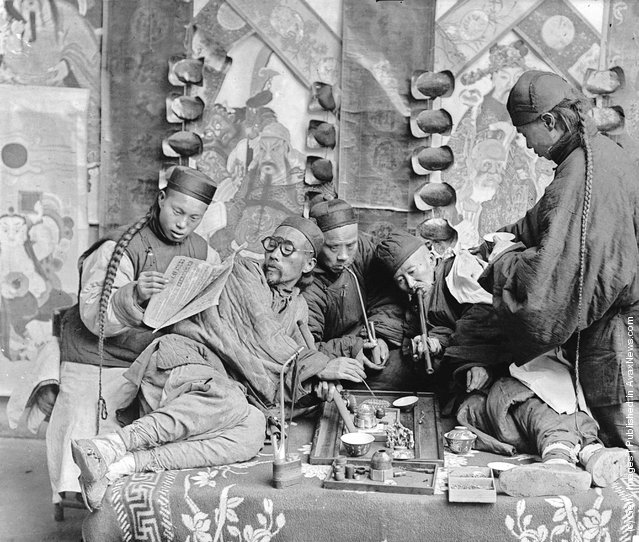
Decades before the movie industry really took off; film enthusiasts could drop a few pennies into machines called kinetoscopes and press their eyes up to peepholes to watch tiny, fleeting motion pictures. One of the very first films to really take off as a kinetoscope classic was Opium Den. Lasting only a few seconds, this would hardly be considered a movie by today’s standards but was – for its day – completely groundbreaking and is widely considered to be the first depiction of drugs on film.
The one short scene that has survived from Opium Den, over a century on, shows a bumbling police officer chasing an opium smoker in and out of the flapping saloon doors of a drugs den. Many film historians have said that this film inspired Hollywood’s obsession with drugs, specifically opium, over the next 20 years.
Black Fear
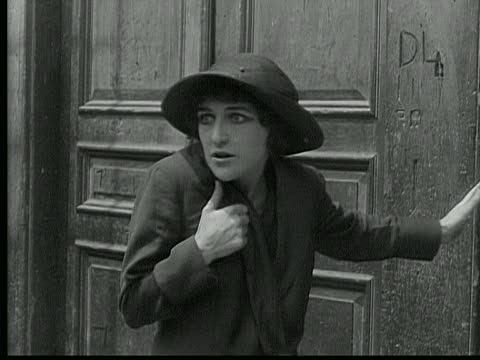
As you might have guessed from the title of this 1915 flick, drugs are portrayed far from favourably in Black Fear. Considering it was released in the first decade of the 20th century, Black Fear is an extremely gritty social commentary which was made on a small budget with little known actors and depicts war, cocaine addiction, infidelity, and suicide. Although Black Fear comes across as preachy and over-acted to modern audiences, this is the sort of film that, if made today, would be filmed with a handheld camera and scoop up just about every Oscar going.
The Mystery of the Leaping Fish
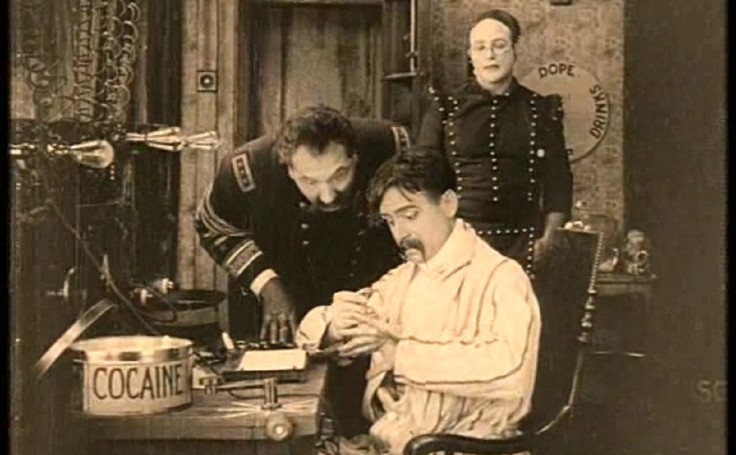
The message of The Mystery of the Leaping Fish couldn’t be further removed from that of Black Fear, which was released just one year earlier. Icon of the silent screen, Douglas Fairbanks stars in this zany short comedy as the subtly named hero; Coke Ennyday. In scenes that would still be considered shocking today, the detective Ennyday regularly snorts from hatboxes filled with cocaine and injects himself with a syringe he wears around his neck like a pendant.
The comedic attitude that this movie has towards drug use can be seen in one particularly funny scene where Ennyday apprehends a gang of drug dealers – only after taking most of their opium for himself. Exactly 100 years on, we’re yet to see a more casual, carefree attitude to cocaine on film than this.
Chinatown Nights
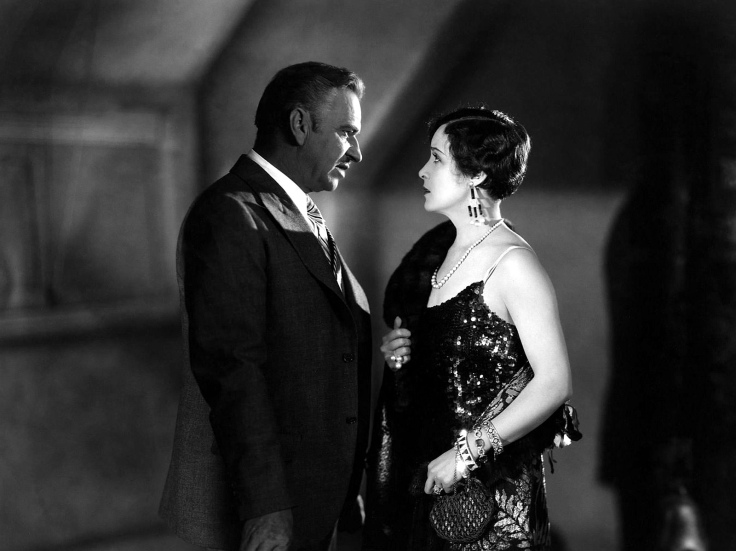
Chinatown Nights is about as twenties as it gets; not only in its lavish, art deco style, glamorous flapper girl lead, and overly dramatised drugs dogma but also in its overtly offensive racial stereotypes. The film follows the downfall of a stunning socialite as she falls prey to the temptation of drugs and crime. Joan Fry is the name of the well to-do flapper who falls in love with the leader of an underground Chinese gang and, consequently, gets dragged down into a decadent display of shame and disgrace.
High on the Range
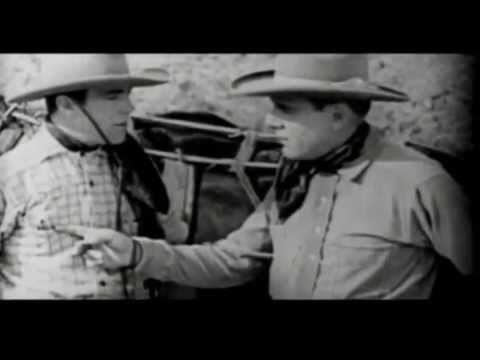
It’s no secret that drug use was rampant during the most rebellious decade of the 20th century; the roaring twenties. As well as being the era of short hair, short skirts and jazz music, the 1920s was the time that Hollywood really made a name for itself and the movie industry became bigger than ever before. It’s hardly surprising, then, that recreational drug use was shown on screen in a number of silent pictures.
High on the Range was a cinema short released in 1929 which follows a Midwestern cowboy who falls foul to the allure of the reefer. When the young, naive cowboy describes the contents of his pocket as ‘a new kind of cigarette’, he is quickly corrected by his wise foreman who tells him; ‘they’re marihuana weed, a devilish narcotic; and if you smoke them, you go bughouse, loco and want to raise h**l in general’. Sadly he doesn’t listen and, after a few puffs of the suspicious cigarette, ends up killing an elderly colleague in a crazed rage.
The Pace that Kills

The publicity poster for The Pace that Kills shows a monstrous wolf carrying the body of a glamorous woman in its jaws. Captions along the top and bottom of the poster declare ‘Keep this wolf from your door!’ and ‘destroyer of souls.’ Just in case these messages weren’t clear enough, the wolf even has the words ‘DOPE’ written across its body in big, bold letters. This 1935 drama follows the sad story of a small town girl called Jane as she falls for a big city slick who tempts her with a narcotic referred to as ‘headache powder’. As you might have guessed, things don’t work out well for Jane as she eventually spirals down into a life of amorality and prostitution.
Marihuana
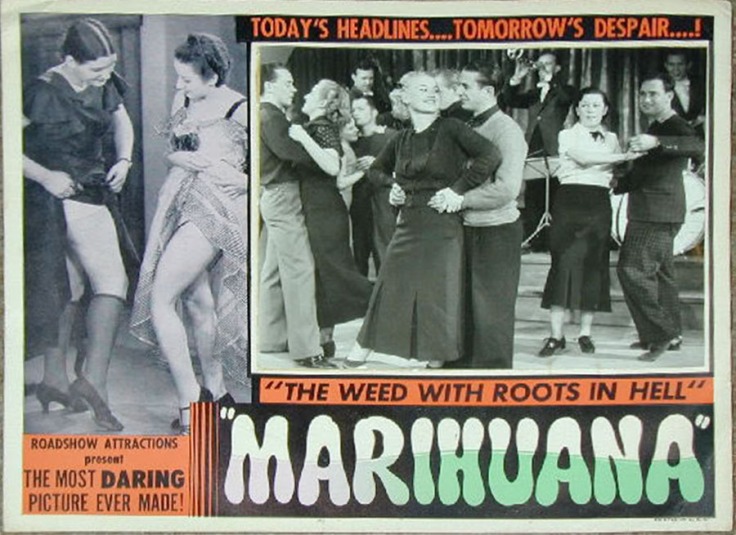
‘Shame, horror, despair’ and ‘weed with roots in hell’ are just two of the terrifying messages which are painted across the poster for Marihuana in bold, red lettering. This 1936 movie is one of many examples of anti-marijuana propaganda in 1930s cinema and really doesn’t hold back when it comes to putting viewers off. In fact, drugs aren’t the only downward spiral we see depicted in this shocking picture which follows the woeful tale of a beautiful young party animal named Burma.
We’re shown how Burma’s bad decision to attend a beach party leads to her deciding to skinny dip, which, in turn, ends up with her having sex and getting pregnant. As you might have guessed, Burma also tries some marijuana which – of course – ends up with her becoming a heavily addicted dealer who is forced to handle a number of gruesome deaths.
Reefer Madness

Also released in 1936, Reefer Madness was seen as a sort of sister film to Marihuana. This unintentionally comedic drama went unforgotten for a few decades, until it was discovered during the seventies and rereleased as a piece of hilarious satire, almost instantly becoming a cult classic. As a result, you might have seen the poster for Reefer Madness ironically displayed in university dorms, complete with its dangerous red colour scheme and slogans like ‘drug crazed abandon’ and ‘the sweet pill that makes life bitter’. The film follows the downfall of several wholesome high school students who succumb to the allure of reefer and end up dead, imprisoned or addicted.
She Shoulda Said No
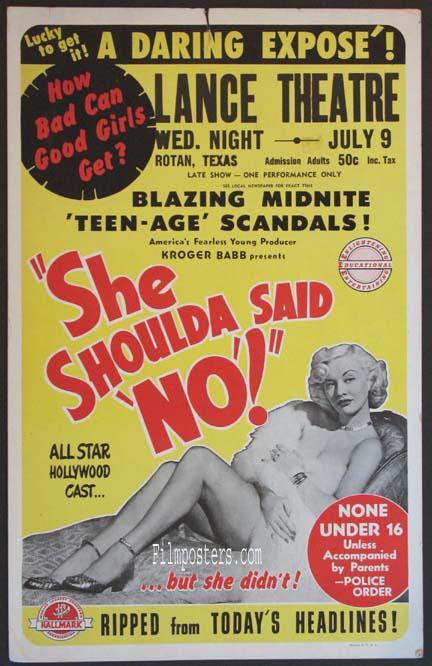
Sometimes the title of a movie really gives away its underlying message. In the case of She Shoulda Said No, however, there really is nothing underlying about the message at all. Released in 1949, this film oozes vintage glamour and, of course, comes with a classic dose of anti-drugs morality. The main character is Anne Lester, a chorus girl who goes down a deadly path of addiction and promiscuity which results in her brother committing suicide. Unlike some of the cautionary tales which came before it, She Shoulda Said No has a somewhat happy ending. Anne ends up joining the police force in the war against marijuana. The film has its roots in the real life of its star, Lila Leeds, who just one year earlier, was wrapped up in a highly publicised scandal which saw her receive 60 days in prison for possession of marijuana.
The Man with the Golden Arm
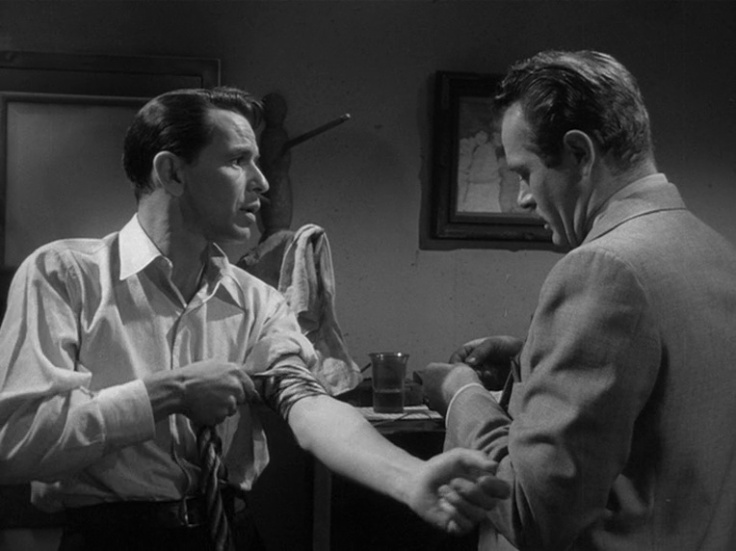
In the conservative fifties Hollywood was more conservative than ever with its onscreen depictions of drug taking. Legendary crooner, Frank Sinatra, plays the Man with the Golden Arm, Frankie Machine, in this crime thriller. Frankie Machine is heavily addicted to an illegal drug which remains unnamed but is strongly suggested to be heroin. The film follows Frankie as he struggles to stay away from drugs after being released from prison, despite his former dealer and other criminal connections desperately trying to lure him back to his old ways. It’s clear that by the 1950s, the message wasn’t as on the nose as it was in 1915 Black Fear or in the Reefer Madness era of the thirties, where one dabble with drugs would result in pregnancy, prostitution, and an untimely death. However, there is still a very strong anti-narcotics message throughout the entire film.